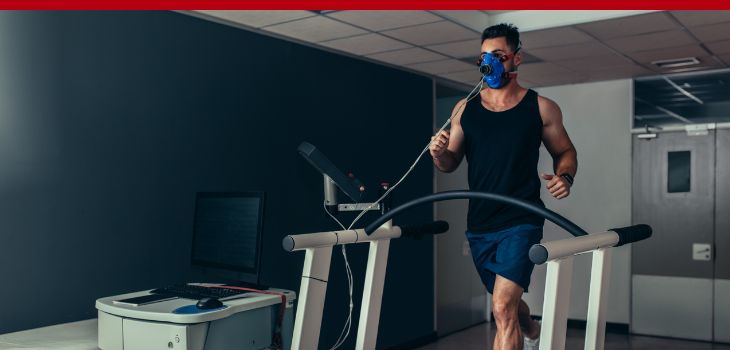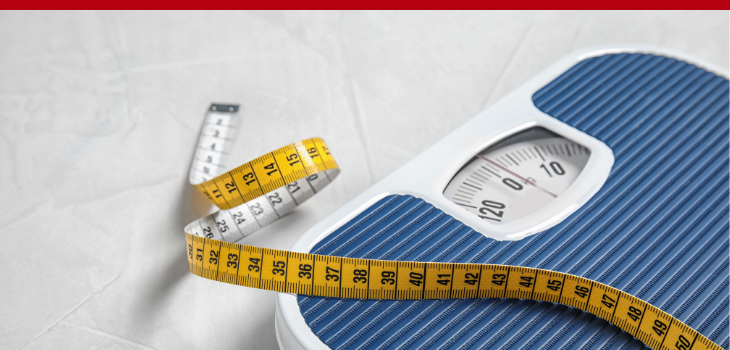VO2 max is not just a scientific term, it’s your body’s ultimate performance indicator, and guess what? It might just be the game-changer you’ve been looking for!
In this Ask Ted episode, Ted is diving into the dynamic world of VO2 max, longevity, and why feeling better today is as crucial as improving our health span.
He will answer the questions:
Does a Higher VO2 Max Help with Altitude, How to Find Your Heart Rate Max, and How to Train with Altitude Machines for VO2 Max?
He will discuss the 4×4 protocol, determining the right heart rate range, and the effectiveness of training at altitude.
He reveals the most important type of training for increasing VO2 max, explains how to calculate 90% of your heart rate max and discusses the potential benefits of altitude training and hypoxia machines. Listen now!
You’ll learn:
- The key to unlocking your body’s ultimate performance potential
- What is the 4 x 4 protocol and who should do it
- The most important type of training for increasing VO2 max
- How to calculate 90% of your heart rate max to determine the right heart rate range for interval training
- The potential benefits of altitude training and hypoxia machines for improving VO2 max
- And much more…
Related Episodes:
579: VO2 Max Explained: The Key to Longevity and a Healthier Life (And How To Improve It)
581: 7 Things That I Learned About Health at 46 That I Wish I Knew at 36
Links Mentioned:
Join The Unstoppable After 40 Newsletter
Learn More About The Unstoppable After 40 Coaching Program
Schedule a 15-Minute Strategy Call with Me!
Watch My Body Breakthrough Masterclass
Connect with Ted on X and Instagram
Ready to make 2024 your best year ever?
We just opened spots for our Unstoppable After 40 Coaching Program.
Together, we’ll craft a personalized plan to reclaim your health and transform your body in a way that fits your busy lifestyle.
If you want to learn more about our program, click here!
We have limited spots, so click here to book a call now!
Podcast Transcription: Ask Ted: Understanding VO2 Max and the Altitude Challenge, The Relationship Between Heart Rate and VO2 Max, and What Is the Best VO2 Max Protocol
Ted Ryce: What's up my friend and welcome to another episode of Ask Ted. Today I'm going to be answering a question about VO2 max training and specifically we're going to be getting into the 4 x 4 protocol, how to know what the right heart rate range is and whether training at altitude can improve your VO2 max. So all that and more today on the Ask Ted episode.
So what is up, my friend? Hope you're doing well. In case this is your first time tuning into the show, my name is Ted Ryce, host and health coach to executives, entrepreneurs, and other high performing professionals. And even though I've already had my coffee, I'm tripping over my words like usual.
Really excited to do this Ask Ted because it's such an important concept, something that I'm really into at the moment, VO2 max training. So let's dive in. And the question comes from Patrick on YouTube and he listened to my episode "579: VO2 Max Explained: The Key to Longevity and a Healthier Life (And How To Improve It)".
Patrick asks: "The 4 x 4 is something Peter Attia suggested. How does one know what 90% is? Also, I have a hypoxia machine I bought for Aconcagua - by the way, that's a mountain in Argentina, had to look that one up - Would this be a tool to help?"
So first of all, if you want a full breakdown of VO2 max, why it's important, why it's a key to longevity, and also feeling better today, so not just improving your life, improving your health quality or your health span, but it improves your life right away.
If you wanna learn why, go to episode 579 on the Legendary Life Podcast and listen to that episode. I'm gonna be talking a lot more about VO2 max this year because more and more research just confirms it's incredibly important. So let's get into what Patrick asks.
So first of all, I want to address something he said. The 4 x 4 protocol is something Peter Attia suggested. So first I want to talk about two things. Number one, what the 4 x 4 protocol is. The 4 x 4 protocol is a interval protocol, a high intensity interval training protocol, more specifically, that has research proving that it's effective for increasing your VO2 max.
Peter Attia suggested it. So I like Peter Attia, I think he talks a lot about the important aspects of longevity compared to some other people who are...
Won't name names or throw anybody underneath the bus simply because I can't remember anyone's name at the moment. But I really like Peter Attia however, one thing that I've heard Peter Attia say is about V02, is about Zone 2 training. And Zone 2 training is important. But what we know is that Interval training, specifically high intensity interval training like the 4x4 protocol works better for V02 max
That's not me saying that. That's not about what Peter thinks or says. That's what research says. And I just want to make one point here. This isn't about it's great. I love Peter and other people like him who are putting out great science based information, but it's not about what he says. It's not about what I say.
It's about what the evidence says, because we're all getting the evidence from the same place. Although some folks kind of disregard the evidence in favor of what they prefer to believe instead of what science is showing us is more true, let's say. And I say more true because it's about confidence in something. It's not about 100% true or, you know, but as far as the research is concerned, intervals are more effective at increasing your VO2 max than steady state cardio like Zone 2 cardio.
I wanna say something else about this is you don't have to do the 4 x 4 protocol. In fact, during that episode, and I'll share the story briefly here, I have had clients in the past, one in particular stands out, Dan, he lost I think 56 pounds with me. I've talked about him a lot, he's been on the show sharing his story.
And Dan was interested in improving his VO2 max because he follows me, he follows Peter Attia and he realized it was something that was important for heart health, longevity, et cetera. And of course, I gave him the 4 x 4 protocol to do. Except the 4 x 4 protocol really sucks if depending on what shape you're in. And let me tell you, I'm in pretty good shape right now and I would have trouble doing it. Maybe not right at this moment because I've been training pretty hard in Brazilian Jiu Jitsu. But the 4 x 4 protocol is four minute intervals with three minutes rest. So picture this, you're on an exercise bike. The interval timer goes off and it starts the countdown for four minutes. During this time, you increase your speed so you're pedaling faster. You're increasing the resistance so that you feel the resistance on the bike, but still you're able to maintain a high output of force. In other words, it's not so much resistance that you slow down, but it is enough so that...you feel the fatigue starting to build and build and build. And 30 seconds in, you're starting to feel it.
One minute in, it's really sucking. Two minutes in, you're like, oh my gosh, how much longer can I do this? And by the time you get to four minutes, you're questioning if a longer life is worth doing four minute intervals.
And then so after that you rest for three minutes and then you're supposed to repeat it a total of four times. Of course after you warm up, maybe throw in a little cool down there as well. The times that I've tried this with clients and myself they've hated it.
So what I want to tell you is, although the 4 x 4 protocol is good, it's science backed, it's not a good place to start for the majority of people. It's better to start with 30 seconds, 60 seconds, 90 seconds. And I want to say something else. This really isn't about a specific protocol because actually there is an eight by four protocol that actually has research showing it's more effective than the 4 x 4 protocol. And what that is, by the way, this is something I used to give clients too, eight minutes of an interval with two minutes of rest repeated four times. Those are the intervals I used to do and I would give four by fours to people as a way to build them up to the eight by four. So...
Start with something light. You can start with, now what I do, I start clients, I've got everybody in my group training, my group coaching program, everyone's doing intervals. I start them out at 30 seconds with 90 seconds of rest, and I build up from there. Now I have some people who are in better shape, and I've raised their intervals to a minute or even two minutes.
But in general, you want to slowly build up your intervals instead of jumping into something like a 4 x 4 protocol. That's my advice from working with people for 25 years. And I've been doing interval training for, let's say 15 of those years, over half the time I've been in fitness. Anyway take that and just know if you try one of these intervals and you're like, oh my gosh, this sucks, know that you don't have to do that interval, you can work your way up to it.
Because last piece of advice here before I move on to the next point is you shouldn't feel like you have to lay down on the floor for 10 minutes to recover from your interval workout.
If you're doing that, you're pushing yourself too hard. You're pushing yourself too hard.
Instead, do what I just suggested. Start with shorter intervals, maybe 30 seconds, one minute. Use 90 seconds to 120 seconds of rest. And build your way up. You can slowly increase the interval time and decrease the rest time, or you can increase it as well.
Play around a bit, but make sure the goal is that you're coming out feeling better. Don't feel trashed. Now let's get into the second part of the question. There's the three parts here. How does one know what 90% of your heart rate is? Now you ask, how does one know what 90% is? And what I would tell you is...
So here's the thinking. The reason why high intensity interval training works so well for improving VO2 max, the understanding is that working at a higher intensity of your heart rate, of your max heart rate, that's what the 90% is, leads to better results. It's the intensity of the interval that creates the adaptations. So that being said, how do we know what 90% is? Well, the first thing is, well, there's two ways of doing it. There's the, let's say, the more technical way, which you can do a heart rate max test. You can Google that, but basically it's like, do some type of activity to get your heart rate up to the max, so you understand what 100% of your heart rate max is.
Or you can do it the way that, the estimated way, which is 220 minus your age. So if you do 220 minus your age, you'll get your max heart rate, and then you multiply that by .9. And whatever that is, that'll give you your heart rate max and I'll do it right now for you. So I'm 47, just turned 47, yes, happy birthday to me. So 220 minus 47 equals 173. By the way, I know this isn't true because I can get my heart rate up higher than 170. I can get it up to 180 and change. And that's why doing a heart rate max test is more accurate.
However, this is something that can at least get you in the ballpark. So anyway, 220 minus my age, so 220 minus 47 is 173. Then I'm gonna multiply that by .9, and that gives me 155.7. So that would be 90% of my heart rate max.
What that means is during the intervals, what I wanna do is get my heart rate up to 155 or more. And I want to keep it there for four minutes.
It's as terrible as it sounds. Especially if you're not in good cardiovascular shape and you just jump into doing intervals. So that's how you would figure it out. But again, if you are in better shape, I highly recommend doing a heart rate max test of some sort. You can just Google how to do it based on whatever piece of equipment you have. For example, if you're into running, you Google "heart rate max test running" or "heart rate max test cycling" and you can easily get a protocol for doing it. It's really easy. Just you have to do something that gets your heart rate up to its maximum level.
Clear on that? Cool. Always feel free to ask questions and reach out to me just like Patrick did. You can ask on YouTube, you can ask on Twitter. Those are the two best places. Or email me.
Now I want to address the third question. He said, "I have a hypoxia machine I bought for doing Aconcagua - so again, that's a mountain in Argentina - and would this be a tool to help?" Now I want to be clear about something. I don't have experience with mountain climbing or a lot of knowledge about altitude training.
I understand some basics about it because I've been in this business for so long I can't help but to know a little bit about everything. But I don't know specifics so I had to look things up. And one thing I'll tell you is this. I want to say a few things. If you are into mountain climbing or anything where you're gonna be performing at altitude your VO2 max is reduced by 1% to 2% for every 390 feet above 4,900 feet in elevation. So what does that mean? When you get to around 5,000 feet, you start to experience a lowering of VO2 max. So for every 390 feet above, they give the number 4,900. So for every 390 feet above 4,900 feet in elevation, you experience 1 to 2% of a reduction in VO2 max.
So if you were to start off with a higher VO2 max, you're gonna experience less of a decline, right? If someone starts out with a VO2 max of 60 and they experience a one to 2% decline when they reach 5,400 feet versus someone who starts at a VO2 max of 40, that's gonna be a big difference. Big difference. So this is something, so VO2 max training will help you perform at altitude. Conversely, training at altitude also helps VO2 max. So doing aerobic training at altitude improves your VO2 max. Now the issue with this is what are you gonna do? Are you gonna move to some city that's high in altitude like Mexico City? That's the first time I experienced altitude sickness. I flew into Mexico City from Playa del Carmen. And as soon as I got there, I felt weird.
And I thought I was just kind of stressed from the flight. You know, it's not really that long of a flight or anything, but I thought maybe I'm just a bit stressed. But I noticed that, you know, I just wasn't that mentally sharp. And I was experiencing some other strange symptoms. For example, I slept terribly my first night and I kept waking up to pee.
And I had a conversation with someone who was at the event I was going to, that's why I was in Mexico City, and he said, you know what, well, you're at altitude right now.
In fact, I would eventually learn that Mexico City, they had the Olympics in Mexico City, I think in the late 1960s or early 1970s. That's when all the research on altitude started being done because of what happened, athletes didn't perform well for the Olympics in Mexico City. And that's how all the altitude research got kicked off.
But if you don't want to move to a city that's like Mexico City or I guess Denver, Colorado, the Mile High City, right? If you don't want to move somewhere that's high up or live in the mountains, there's something called what Patrick mentions. He has a hypoxium machine. And so he didn't mention which one he...
He didn't mention which one he bought, but I started looking around and it is very interesting.
So there's a lot of literature on training at altitude and how it affects VO2 max, sleeping at altitude, exercising at altitude. But there's also things that can mimic altitude so you don't have to go in and move somewhere. And the benefits are quite interesting. So some of the physiological reactions is boosted oxygen absorption from your lungs.
Boosted production of erythropoietin hormone EPO by the kidneys. That's what stimulates a generation of red blood cells if you ever heard of doping for endurance sports That's what that's what they're taking. Something that is similar to that.
Not something I know a lot about to be honest, but again, that's... I forget exactly what they take, but it boosts EPO. And there's also increased capitalization for greater oxygen delivery to the, to different tissues like muscles and brain. And there's enhanced production of ... mitochondria. So mitochondria work better.
Um, there's also a decrease in average heart rate, a decrease in blood pressure, and a decrease in oxidative stress from reactive oxygen species or free radicals. So it is quite interesting. And I want to be clear about this, is that I haven't experimented with it yet, but this seems like something that could, number one, boost your VO2 max.
And it's something that you can do in your home, but is it worth the money and how effective is it? It's a great, great question that I don't know the answer to. I've been searching around since I was asked this and there's a lot of marketing involved.
And I've seen hypoxic chambers. So we're not talking about that. We're talking about altitude training products, like altitude training masks. Those have been quite controversial. So I'm gonna look into that and maybe even experiment with it and maybe get someone on the show to discuss it because that's a bit new for me as well.
That we can buy technology that helps boost our VO2 max while we're doing regular Zone 2. So maybe if you're someone who has injuries in your knees or hips or low back or whatever, and you can, doing interval training is very difficult because of those injuries, but you can do a VO2, I mean, I'm sorry, a Zone 2 session, but you're using one of these altitude training devices, that would be very interesting. That might be a way of improving VO2 max, but using altitude mass. So, yeah, it's very controversial.
But I know that technology is evolving and I'm gonna look into that more and perhaps get someone on the show. So just to recap today, we talked about how interval training is more important or more effective for raising your VO2 max than Zone 2, period. That's what the research shows. There's no arguments about it.
If you want to learn more, go to my episode "579: VO2 max Explained: The Key to Longevity and a Healthier Life (And How to Improve it".
We also talked about the 4 x 4 protocol and why although it's been proven effective to raise VO2 max, it is not necessarily what you need to start with and it's not necessarily the best to raise your VO2 max. I talked about the eight by four, which in one study was proven more effective than the 4 x 4.
And that research was done on cyclists. And the eight by four was what I've been doing for a long time, since 2019, when I started really getting into this for... when I was living in Thailand for Muay Thai and Brazilian Jiu Jitsu performance. We also talked about max heart rate because when you're doing HIIT training, and this is very important...
So many people say they're doing interval training, but their heart rate isn't getting high enough. So it's really important that you understand that heart rate is the key to getting your, or to boosting your VO2 max. And doing exercises that effectively increase your heart rate at a level that you can sustain for the period of time for the interval. And you can test your max heart rate by doing a heart rate max test.
But if you're just starting out, you can simply use 220 minus your age, which will give you your heart rate max, and then multiply that by .9, which will give you your 90%. And you wanna reach that or higher during your intervals.
We also talked about hypoxia machine, training at altitude and the potential for people to get a better training effect using some type of technology. But I don't have the answer to it yet. Even looking for some of the research, it wasn't quite clear. So I'm gonna have to spend some time looking into it.
And maybe I can even find the top altitude training system and get that person on the show and figure it out. I think that would be fun and even more fun to actually train and experiment with something because one thing, and this will be the last thought I'll leave you with, the one thing that I recommend that you do if you're wanting to get serious about this is get a VO2 max test done. Yes, you can do the 12 minute Cooper run, which can approximate your VO2 max.
But having a VO2 max done, test done with a professional in a lab setting is going to set the standard for how to do it on your own. I believe in getting expert advice, going to the dentist, going to the doctor, et cetera, using accountants, hiring coaches like myself.
Get experts to help you set the... to learn what you need to learn, to set the standard of how things should be done, and then you can start to do things on your own. But get expert, if you're really getting into this, get it tested by an expert, and they'll also give you your heart rate max, too, during that test. So that is it for today. What's one thing that you can do to make this an actionable episode? That's what I want you to do.
Hope you enjoyed this. If you have questions, make sure you email me at ted@legendarylifepodcast.com or reach out to me on Twitter at ted_ryce. That is it. Hope you enjoyed this and speak to you soon.
Sign up to receive email updates
Enter your name and email address below and I'll send you periodic updates about the podcast.









